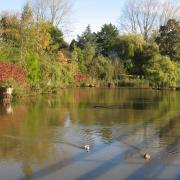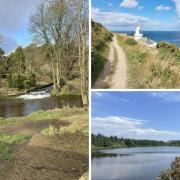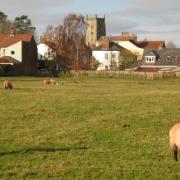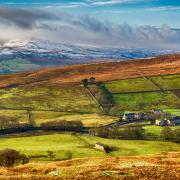Water power comes into its own in Yorkshire as Martin Pilkington discovers

There is no lack of fast-flowing rivers in Yorkshire, nor if activity in the last few years is anything to go by, in the drive and ingenuity to harness their power. The idea is ancient of course and several such ‘new’ projects are actually housed in buildings being returned to their old use. Perhaps the most striking example is at Linton Falls in the Yorkshire Dales, which between 1909 and 1948 generated electricity for Grassington. ‘It stopped working because with the arrival of the national grid you didn’t need small local generators,’ explained English Heritage’s Neil Redfern, principal inspector of Ancient Monuments for Yorkshire. ‘But now it can be used to feed power straight back into the national grid.’ The building is a Scheduled Monument and English Heritage worked closely with owners JN Bentley, Skipton-based civil engineers, who obtained permission to reconstruct the upper part of the building and to put a corrugated roof on to match the original design. ‘What was really interesting about Bentley’s proposal when they came to us was just how little they had to do to get it back to producing hydroelectric power,’ said Neil. Where the old water-turbines once sat JN Bentley installed two Archimedes screw turbines and now it is generating enough green power to meet the average energy needs of 90 family homes. The building, occasionally open to the public, is enhancing the environment as well as saving it. ‘This place is not your normal sort of Dales building,’ said Neil. ‘There are few historic industrial structures in the Dales. When it was turned on the whole building started to vibrate. That’s the difference between having a ruin and a living building.’ At Howsham Mill on the Derwent near Malton a beautiful 18th century watermill has been adapted to generate green energy via its wheel and an Archimedes screw turbine, another project which is both practical and aesthetically pleasing. In Settle, the head race of a mill with its origins in Tudor times is now used to drive another Archimedes screw and generate power for the National Grid (and the homes in the converted mill itself).
New sites are being found too. Esk Energy (Yorkshire) Limited was established as an industrial and provident society in 2008 to explore the possibility of generating community energy. Having rejected the idea of a wind turbine as visually intrusive and unlikely to receive planning permission, they undertook a river survey that identified Ruswarp weir near Whitby, as suitable for a hydro-electric project because of its good access, a supportive landowner and sufficient head of water to generate power. In December 2012 the company’s single Archimedes screw turbine began generating. It provides enough electricity to power about 48 households, and over 10 years will save 770 tonnes of CO2. But between the survey and the moment when the power began to flow there was a huge amount of work to be done, including liaison with the local fishing community and the Environment Agency regarding the river’s salmon; obtaining a water abstraction licence from that same agency and not least raising the £450,000 to finance it all.
‘The project was funded through a community share issue and a mixture of loans, grants and revenue share from the North York Moors National Park Sustainable Development Fund, North Yorkshire County Council Community Fund, Key Fund, Yorventure, Naturesave Trust and CO2Sense.
‘Support was also provided by the Co-operative Enterprise Hub,’ said company secretary Caryn Loftus. Having brought their own project to completion the company is helping others with similar aims, as she explained: ‘With some funding from the Cabinet Office we’re offering peer mentoring to other community hydro groups - we’ve already given some workshops, and put together e-learning modules.’

Sea Power
There are plenty of strong currents off Yorkshire’s coast as well as in its rivers, the Humber Estuary and nearby waters in particular identified as a key resource for tidal stream energy generation. Between 2009 and 2013 two different devices were trialled in the area.
‘The fact that two tidal stream generators have already been installed on the Humber suggests that the regulators have experience with and are open to the granting of consent for such devices, which will expedite the process for future applications – an attractive feature of these sites, said Dr Steph Merry, head of marine at the Renewable Energy Association. ‘It is vital that the UK government supports the tidal stream energy industry in which we are currently the global leaders. Fifty per cent of the European tidal energy resource lies in UK waters and this provides a totally predictable source of clean electricity, which not only contributes to reduction in carbon emissions, but also helps ensure security of energy supply.’
Sir Greg Knight, MP for East Yorkshire has pushed for this technology and energy source to be explored in place of what he says are unsightly wind farms, highlighting it as a huge untapped resource. ‘Britain is an island and we should be using our long shoreline rather than desecrating our beautiful landscape,’ he added.



























